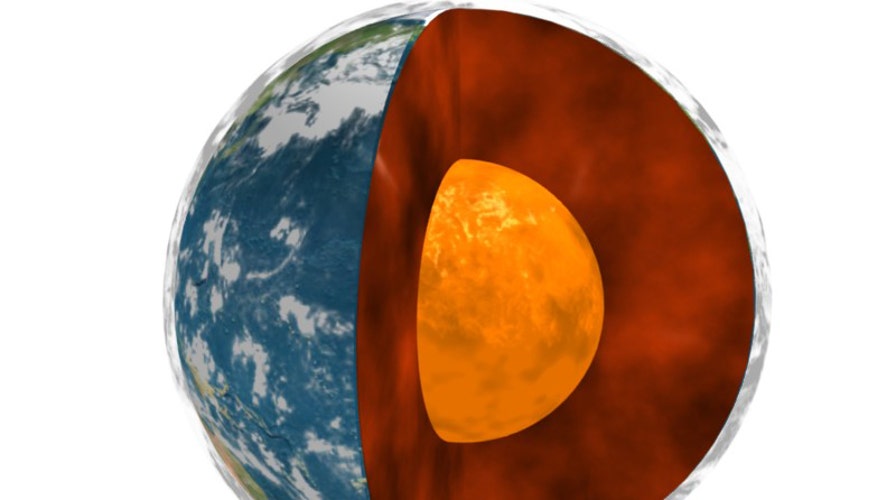Fox News Flash top headlines for Sept. 20
Fox News Flash top headlines for Sept. 20 are here. Check out what's clicking on Foxnews.com
Ancient, gigantic regions of rocks as large as continents exist hundreds of miles below the Earth's crust and could be as old as the planet itself, according to a new study.
The study used models to trace the location and origin of volcanic rock samples found across the world back to two solid continents buried in the planet's deep mantle. The findings, published in the Journal Geochemistry, Geophysics, Geosystems, suggest these large rock regions have existed for some 4.5 billion years.
Scientists previously hypothesized that these buried continents came from subducted ocean plates.
However, the new study indicates they may have been formed from an ancient magma ocean that became solid during the planet's early formation and may have survived the impact that created the Moon.
Study co-author Curtis Williams, a geologist at the University of California-Davis, told GeoSpace it's amazing that these unique regions have survived most of Earth’s turbulent volcanic history relatively untouched.
BRAD PITT'S SPACE EPIC 'AD ASTRA' SETS NEW STANDARD FOR SCIENCE FICTION FILMS, SAYS EX-NASA ENGINEER

A new study offers some surprising information about mysterious buried continents. (NASA/JPL-Université Paris Diderot)
WERE NEANDERTHALS DRIVEN TO EXTINCTION BY A COMMON CHILDHOOD ILLNESS?
Being able to have a sense of these rock masses will help geologists have a better grasp on the ancient processes that gave Earth its current mantle, according to researchers.
Williams and his colleagues compiled new and existing data on samples from Hawaii, Iceland and other locations, according to LiveScience, then identified samples that carry certain ancient isotopes and tried to discern the rocks' journey to the surface.
The researchers reportedly developed a model that noted the strange movement of deep mantle plumes and were then able to trace certain samples back to the underground regions.

